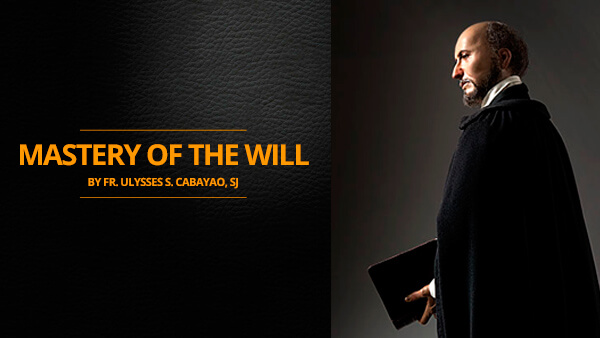


Fr. Ulysses S. Cabayao, SJ
July 31, 2015
“Take, Lord, and receive…my entire will.”
-Spiritual Exercises 234
The part where a cannonball hits Ignatius is an oft-remembered moment in his Autobiography. While being fabulously wounded in battle certainly adds a cinematic flair to a man who described himself as “given to worldly vanities, and having a vain and overpowering desire to gain renown,” what I find more intriguing is how he subjected himself to being butchered in the leg twice over. Let me put it this way—I understand the necessity of surgery for a shattered leg; to voluntarily undergo another ordeal because the healed but deformed leg did not cut a dashing figure is ludicrous.
From that fateful injury in Pamplona, Ignatius was taken to Castle Loyola, arriving in a terrible state that the doctors “agreed that the leg should be broken again and the bones reset.” While undergoing this “butchery”, as he called it, Ignatius “never uttered a word, nor did he show any sign of pain other than clenching his fists.” Imagining how this operation was done without anesthesia is enough to make anyone wince. One cannot help but wonder at the steely courage of this man. After all, it was this same trait that put him in the cannonball’s path. Ignatius’ audacity must have been so palpable and charismatic that despite the poor odds of defending Pamplona’s garrison, he was able to convince his commander to put up a defense, and “though this was contrary to the opinion of all the other knights, still each drew encouragement from his firmness and fearlessness.”
Great pain can discourage most people from wanting to experience it again. But it did not deter Ignatius from going through another torment, this time fueled by his own vanity. “When the bones did knit together,” Ignatius recalled, “the one below the knee rested on top of the other so that the leg was shortened and the bone so protruded that it made an unsightly bump. Because he was determined to make a way for himself in the world, he could not tolerate such ugliness and thought it marred his appearance. Thus, he instructed the surgeons to remove it, if possible. They told him that it could certainly be sawn away, but the pain would be greater than any he had suffered up to now, since the leg had healed and it would take some time to remove the bump. Nevertheless, he was determined to endure this martyrdom to satisfy his personal taste.”
Being valiant, as well as narcissistic, makes for a fascinating personality sketch. Undoubtedly, Ignatius had a great capacity to withstand incredible pain and suffering. His intense vanity, however, offsets this admirable strength. Keeping up such a volatile mix must have demanded an immense amount of willpower and determination in controlling one’s fears and pursuing one’s goals. Unlike others who find the will unruly and weak, Ignatius seemed to have mastery of it, even if it was, at that time, merely self-serving. How is it possible to break someone who was iron-willed? Certainly, not just a cannonball, as those two vignettes shows.
And yet, it is this same strong-willed man who makes an oblation of his “entire will” in the Suscipe. The compelling thing about Ignatius’ life is not about how he has managed to tame that will, but how his experiences have tamed him in order to make that indomitable will work for the greater glory of God. As we remember Ignatius of Loyola, let our curiosity draw us to consider how each step in this pilgrim’s journey has led him to “to give and not to count the cost, to fight and not to heed the wounds, to toil and not to seek for rest, to labor and not to seek reward, except that of knowing that I do your will.”
Reference:
Ignatius & Tylenda, J N 2001, A Pilgrim’s Journey: The Autobiography of Ignatius of Loyola, San Francisco, Ignatius Press, pp. 37-43.